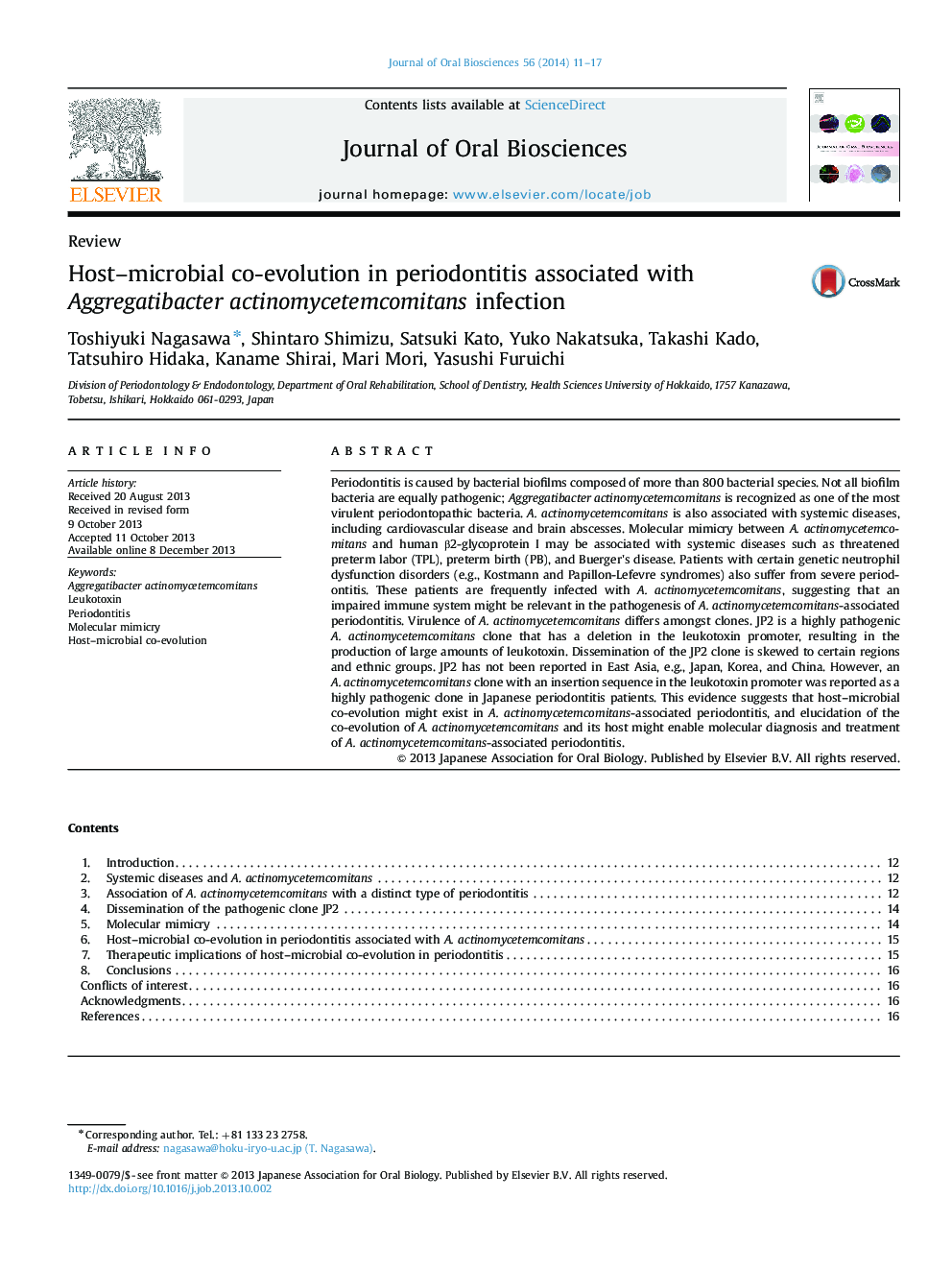| Article ID | Journal | Published Year | Pages | File Type |
|---|---|---|---|---|
| 10163649 | Journal of Oral Biosciences | 2014 | 7 Pages |
Abstract
Periodontitis is caused by bacterial biofilms composed of more than 800 bacterial species. Not all biofilm bacteria are equally pathogenic; Aggregatibacter actinomycetemcomitans is recognized as one of the most virulent periodontopathic bacteria. A. actinomycetemcomitans is also associated with systemic diseases, including cardiovascular disease and brain abscesses. Molecular mimicry between A. actinomycetemcomitans and human β2-glycoprotein I may be associated with systemic diseases such as threatened preterm labor (TPL), preterm birth (PB), and Buerger's disease. Patients with certain genetic neutrophil dysfunction disorders (e.g., Kostmann and Papillon-Lefevre syndromes) also suffer from severe periodontitis. These patients are frequently infected with A. actinomycetemcomitans, suggesting that an impaired immune system might be relevant in the pathogenesis of A. actinomycetemcomitans-associated periodontitis. Virulence of A. actinomycetemcomitans differs amongst clones. JP2 is a highly pathogenic A. actinomycetemcomitans clone that has a deletion in the leukotoxin promoter, resulting in the production of large amounts of leukotoxin. Dissemination of the JP2 clone is skewed to certain regions and ethnic groups. JP2 has not been reported in East Asia, e.g., Japan, Korea, and China. However, an A. actinomycetemcomitans clone with an insertion sequence in the leukotoxin promoter was reported as a highly pathogenic clone in Japanese periodontitis patients. This evidence suggests that host-microbial co-evolution might exist in A. actinomycetemcomitans-associated periodontitis, and elucidation of the co-evolution of A. actinomycetemcomitans and its host might enable molecular diagnosis and treatment of A. actinomycetemcomitans-associated periodontitis.
Related Topics
Life Sciences
Biochemistry, Genetics and Molecular Biology
Clinical Biochemistry
Authors
Toshiyuki Nagasawa, Shintaro Shimizu, Satsuki Kato, Yuko Nakatsuka, Takashi Kado, Tatsuhiro Hidaka, Kaname Shirai, Mari Mori, Yasushi Furuichi,
